What You Need to Know About HIV and AIDS, Their Symptoms, Causes, and How to Stay Protected
HIV and AIDS are terms many have heard, yet there remains widespread confusion about what they mean, how they differ, and how they affect health. This guide will answer essential questions about HIV/AIDS, including causes, symptoms, types, and prevention strategies. Additionally, it will address critical treatments, such as *Dovato*, *Truvada*, and *Descovy*, and explore methods for healthily living with HIV.
What Is HIV/AIDS?
HIV, or Human Immunodeficiency Virus, is a virus that attacks the body’s immune system. If left untreated, it can lead to AIDS, or Acquired Immunodeficiency Syndrome, the most severe stage of HIV infection. While HIV itself doesn’t have a cure, there are highly effective treatments that allow people to manage it and live long, healthy lives.
Difference Between HIV and AIDS
Understanding the distinction between HIV and AIDS is essential. HIV is the virus that causes infection. AIDS, on the other hand, is a condition, not a virus. It occurs in the final stage of HIV infection when the immune system is severely damaged and vulnerable to infections and cancers.
With today’s medications, including *bictegravir*, *pifeltro*, and *tivicay*, many individuals living with HIV can prevent the progression to AIDS and lead a relatively normal life.
Must visit phcworld.com.
HIV/AIDS Symptoms
Symptoms of HIV vary depending on the stage of the infection:
– **Acute HIV infection**:
Within 2-4 weeks after contracting HIV, some people experience flu-like symptoms such as fever, sore throat, rash, swollen lymph nodes, and fatigue. This phase is called acute HIV infection and is the body’s natural response to the virus.
– **Chronic HIV infection**:
During this stage, the virus multiplies at lower levels. People may not experience symptoms during this period, which can last for several years.
– **AIDS symptoms**:
If untreated, HIV can advance to AIDS. Symptoms may include rapid weight loss, persistent fevers, night sweats, extreme fatigue, prolonged swelling of lymph glands, and serious infections or cancers.
Testing regularly is crucial if you suspect exposure, with resources such as “*free HIV testing near me*” or “*STD testing near me*” providing accessible options.
Causes of HIV/AIDS
HIV is caused by infection with the human immunodeficiency virus. It’s primarily transmitted through bodily fluids, including blood, semen, vaginal fluids, rectal fluids, and breast milk. Causes of transmission vary by region, and in parts of Africa, contributing factors include limited healthcare access, lack of education, and socio-economic conditions.
How Is HIV Transmitted?
The primary modes of HIV transmission include:
- **Sexual contact**: Unprotected sex with an infected person.
- **Blood transfusion**: Receiving contaminated blood or blood products.
- **Sharing needles**: Using needles contaminated with HIV.
- **Mother to child**: Transmission during childbirth or breastfeeding.
- **Occupational exposure**: Healthcare workers exposed to contaminated blood.
Types of HIV
There are two main types of HIV: **HIV-1** and **HIV-2**. HIV-1 is the most common worldwide, while HIV-2 is largely confined to West Africa. Both types damage the immune system, but HIV-2 generally progresses more slowly than HIV-1.
Causes of HIV/AIDS in Africa
HIV/AIDS is prevalent in sub-Saharan Africa due to factors such as lack of access to healthcare, limited educational resources, poverty, and high rates of untreated sexually transmitted infections (STIs). Social stigma and limited availability of *HIV meds* further complicate efforts to control the spread.
5 Ways of Preventing HIV/AIDS
- **Use Protection**: Consistently using condoms reduces the risk of HIV during sexual contact.
- **Pre-exposure Prophylaxis (PrEP)**: Medications like *Descovy for PrEP* and *Truvada* can help prevent HIV infection in high-risk individuals.
- **Avoid Needle Sharing**: Use only clean, sterile needles to prevent HIV transmission.
- **Regular Testing**: Regular HIV testing is essential, especially if you’re at higher risk.
- **Education and Awareness**: Understanding the risks and ways to prevent HIV is key to reducing new infections.
For those interested in PrEP, options to *get PrEP online* can make it easier to stay protected.
Treatments for HIV
Today’s HIV treatments are highly effective and help people live long lives with the virus. Medications like *Dovato*, *Symtuza*, and *Rukobia* reduce the viral load to undetectable levels, making transmission to others virtually impossible. Here’s a closer look at some popular treatments:
– **Dovato**: Often prescribed as a single-pill regimen for those starting treatment.
– **Truvada and Descovy**: Both are used for PrEP and as part of HIV treatment plans, helping to prevent the virus from establishing infection.
– **Symtuza**: A combination treatment that simplifies daily medication.
– **Lenacapavir**: A newer option currently in clinical development, promising long-acting treatment.
Potential Side Effects of HIV Medications
While HIV treatments are effective, some may experience side effects. Here’s what to know about a few common medications:
– **Dovato side effects**: Headache, nausea, fatigue.
– **Descovy side effects**: Diarrhea, nausea, fatigue.
– **Truvada side effects**: Gastrointestinal symptoms, decreased bone density.
Living with HIV
Living with HIV has transformed significantly over the past few decades. Today, those diagnosed can expect a high quality of life with proper treatment. Key steps include maintaining a balanced diet, regular exercise, mental health support, and regular check-ins with healthcare providers. Programs and support groups are available to help those living with HIV manage the psychological and social aspects of the condition.
Conclusion: Staying Safe and Informed About HIV/AIDS
While HIV/AIDS remains a global challenge, advances in medicine and preventive measures make it possible to reduce the risk and impact of infection. Treatments such as *Dovato HIV*, *Prezcobix*, and *bictegravir* offer hope and manageable living for those diagnosed. By practicing prevention strategies and spreading awareness, we can contribute to a world with fewer infections and a higher quality of life for those affected by HIV/AIDS.
For more information, visit local health resources to find *free HIV testing near me* or talk to healthcare providers about options for *pre-exposure prophylaxis* and other preventive treatments.



